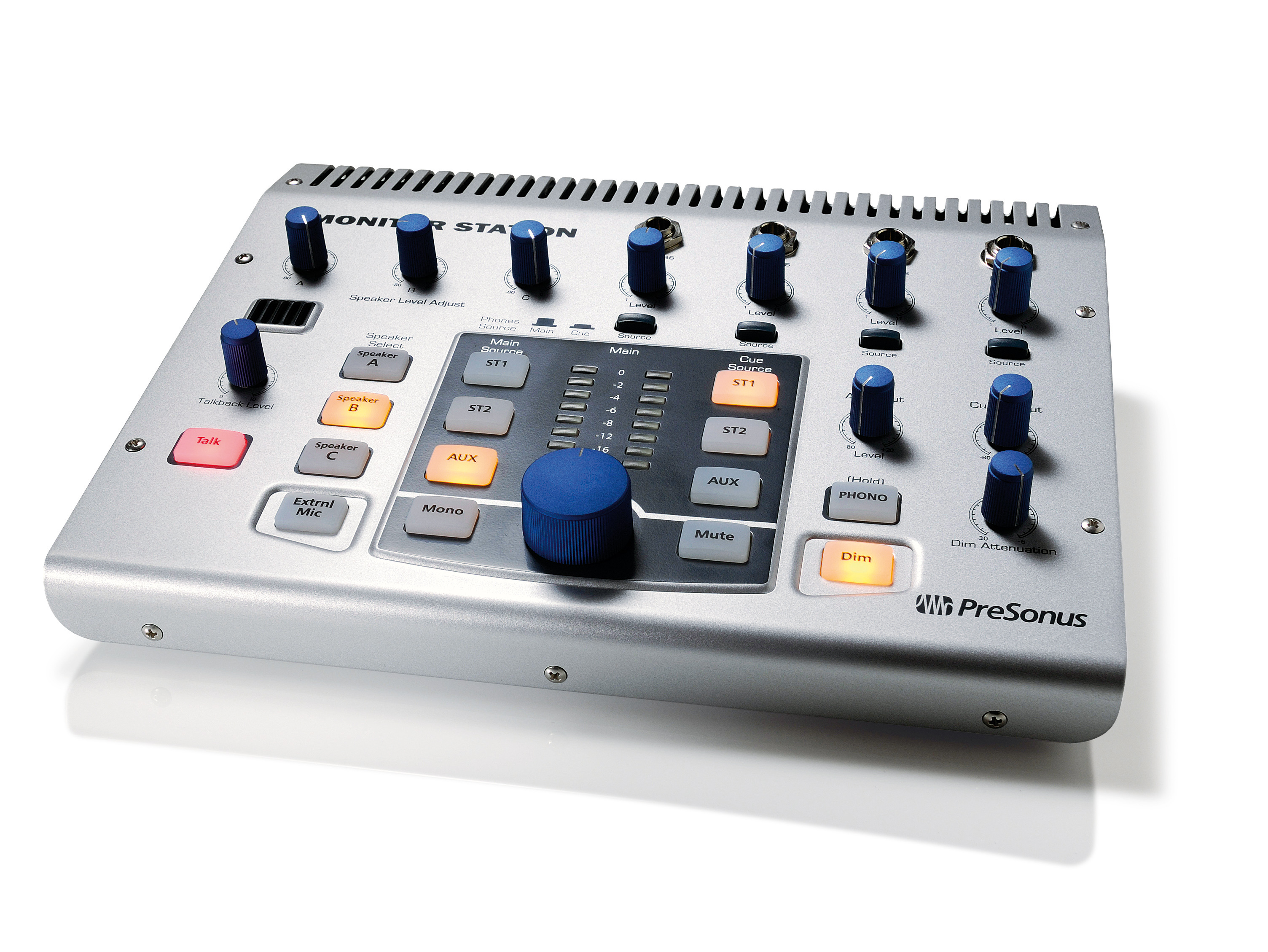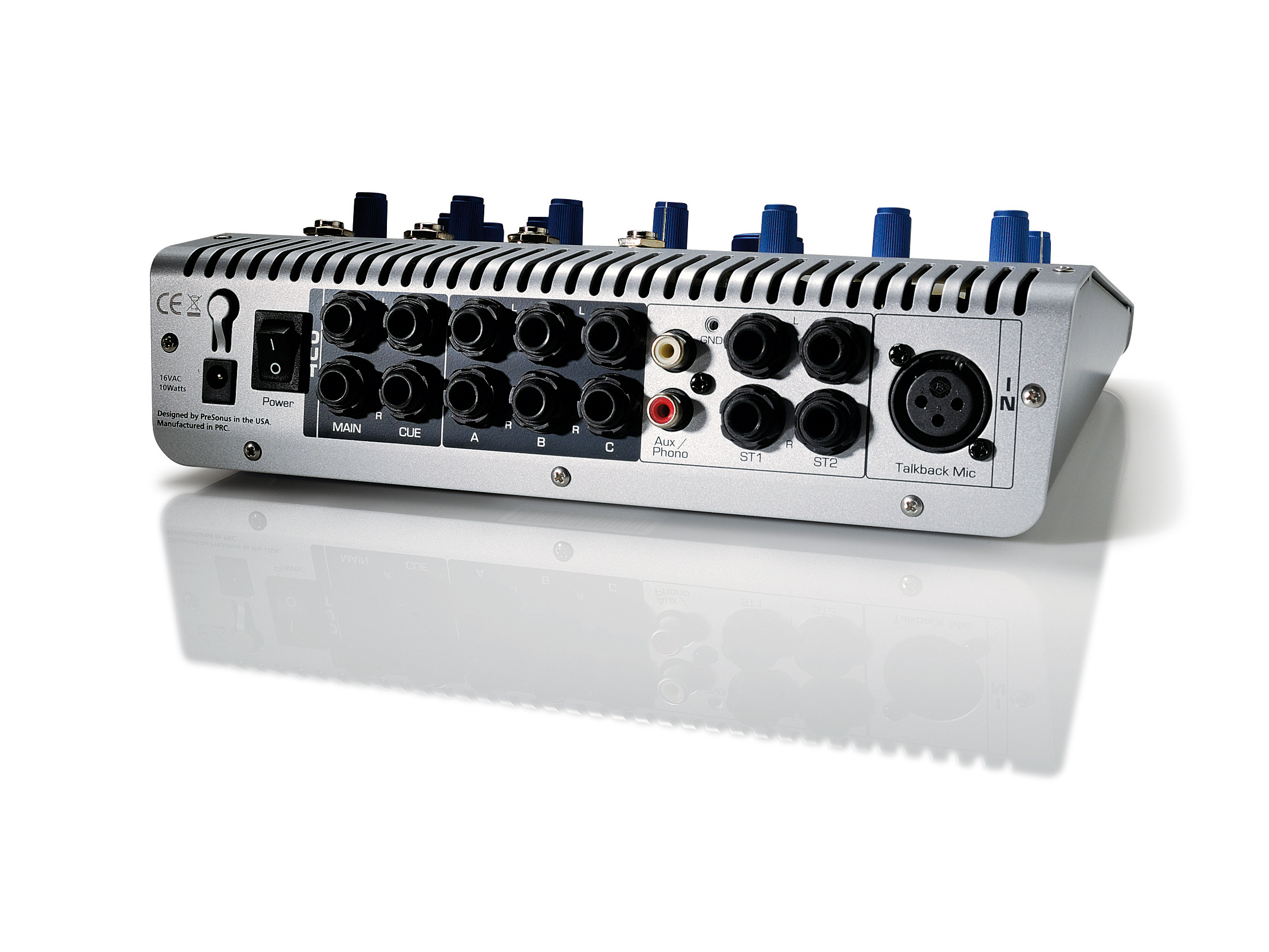MusicRadar Verdict
An excellent combination of flexibility and value makes the Monitor Station extremely desirable.
Pros
- +
Flexible. Straightforward layout. Multiple headphone outs.
Cons
- -
No digital input. No phantom power.
MusicRadar's got your back

Presonus Monitor Station

Presonus Monitor Station
If you want to use more than one pair of monitors or maybe need talkback, a monitor matrix offers a brilliant halfway house between frustration (in the form of endless re-plugging) and an expensive mixing desk.
We say 'expensive mixing desk' because, typically, it'll need to be pretty good to provide even basic multiple headphone, talkback and monitor capabilities.
Presonus already produces the Central Station - a high-quality rack-mounted matrix with wired desktop remote. It's a great unit with relay-assisted audiophile circuitry and is therefore quite expensive. So, the appearance of the MS at such an affordable price is good news.
Overview
In terms of features, the Monitor Station treads similar ground to other comparable units (Mackie Big Knob and Samson C-Control, for example). The basics are three monitor outputs (each with its own output trim), four headphone outputs with individual gain and three stereo inputs (ST1, ST2 and Aux) for feeding in your DAW or external stereo devices.
All connections are on TRS jacks apart from the Aux input, which is on phonos. This third input also has an optional preamp stage with gain control for use with turntables (you can activate this from the front panel).
In terms of monitoring, you get the one main level control for all speaker outputs, so it's important to line up your different monitors using the trims. This way, you won't get any nasty surprises when switching.
In addition, there are mute, mono and adjustable dim buttons plus talkback with level control. By default the talkback uses the onboard mic, though you can plug an alternative dynamic mic in at the back, activating it with the front-panel switch. Unfortunately, there's no phantom power option. Things on the top panel are rounded off with an eight-segment LED input meter.
Want all the hottest music and gear news, reviews, deals, features and more, direct to your inbox? Sign up here.
The unit allows for two signal flows - Main and Cue - and this is reflected in a number of ways. First up, the front panel selectors (ST1, ST2 and Aux) are duplicated either side of the metering. The left side selects sources for the Main bus and the right side for the Cue.
Next there's a Cue output level control on the front panel and output jacks for Cue and Main on the back panel. Finally, you'll find a selector for either Cue or Main below each phones output.
In essence, the Main output feeds your monitors, the Cue output feeds an outboard headphone amp should you have one, and either Main or Cue can be selected for the onboard headphone outputs. The main difference between them, apart from the sources you select, is that the Cue bus carries the talkback signal (the Main bus doesn't).
This is the case even if you select the Main bus for the headphones, so you won't get any talkback in this case. Indeed, you'll find that with the headphones selected to Main the mono switch also affects the signal (this isn't the case when Cue is selected).
Summary
On the face of it, the MS appears simpler than the Central Station, but this is perhaps a little misleading. It offers a number of operating modes that include summed sources and toggled speaker switching, and although these require you to re-boot the unit, at least you don't have to take it apart or mess about with dip switches and the like. However, it is worth mentioning that it's very much a stereo unit and doesn't cater for the multiple streams and configurations you need with surround.
It's often easy to criticise the build quality of cheaper gear, but the MS seems solid. All the main selector buttons are rubberised and backlit, and this makes operation quiet and easy to follow.
We should also mention some of the MS's more subtle features. The talkback, for example, latches when pressed quickly, but if you hold it for longer, it's non-latching. Similarly, the phono preamp must be held for a couple of seconds to engage itself, and this should prevent any nasty mishaps.
Sonically there's nothing to fault. With plenty of juice in the headphone amps you're unlikely to need a further headphone amp, and the onboard talkback also delivers plenty of level. But the most important thing is that the speaker switching is silent - very important if you're listening at any kind of volume.
On the downside it's a bit difficult to know how robust the main volume control will be, and since this will see the most action, you'd hope that if the time should come, it will be easy to replace. Also, there's no digital input (the CS has this) while the omission of phantom power for the external talkback is a bit annoying.
Even so, when you look at the positives you get an awful lot for your cash, and the flexibility offered by the various modes means you can operate it in the way you want to. If you work solely in the box, the Monitor Station will considerably enhance your workflow.
However, it also ties in pretty well with a small mixer, adding the sorts of features that are often missing on a budget desk. Thoroughly recommended.
Jon is a London based platinum award winning mixer, producer, composer and club remixer with a diverse CV that spans dance, pop, rock and music for media. He’s also a long term contributor to MusicRadar's music technology tutorials and reviews. Whether working alone or collaborating he usually handles final mixdowns, so you’ll also find MusicRadar peppered with his handy mixing tips.
